The thermometer was near zero one day when I was on ice skates collecting frozen cranberries.
The cranberries were conveniently above the ice just waiting to be harvested. I was on the north end of “Gowen’s Pond” in Pownal, Maine. It was at that end where water seeped into the pond to make the couple of acres we skated on every winter. It was also there where I once went skating at 52 below zero… the things you do when you’re a kid and there’s a huge bonfire going. I got chilblained hands and feet that night. More than forty years later air conditioning still makes my hands and feet itch. (Yes, I now live in Florida and no, I do not have air conditioning.)
The water on that end of the pond wasn’t deep but it was moving so the ice could be shallow. Locals told a story about the farm next door that lost a cow through that ice one winter. I never did ask why the cow was out on the ice to start with. Maybe hungry and looking for cranberries.
The pond had one little island. Very little. One person couldn’t stand on it… more like a stump. But it was always above the ice and had a bush on it. As I skated past it I saw a movement. It was a turtle swimming under the ice eating a little greenery from around the island. ‘Cranberries and turtle,’ I thought. Actually that turtle was spared but it did make me realize early on that one can forage in winter if you know where to look.
Of course, the real issue is what kind of winter? That can range from deep snow and rock-hard frozen ground to only occasional cool days. Finding wild food where there is no snow and little or no freezing is not difficult. It’s finding food in gawd-awful winters that is a challenge.
I am fond of saying food is where the water is. Whether you are referring to your yard, your county, state, region or country, the farther away from water you are the farther away from food you are. While that is true all year perhaps it is most critical in winter. Plants and creatures can be found near water in the winter.
Everyone is familiar with or knows about ice fishing. In some northern areas it is not only a passion but a rite of passage. It can certainly put food on the table (as can hunting and trapping.) But not everyone has an ice hut or other equipment to harvest food that can move. In that case look for shallow, open streams or with ice than can be easily broken They have fresh water clams in the shallows. They don’t move too fast. As a young man I fished the Royal River in southern Maine and was always bringing home the clams I found. They are a bit tougher than those from the bay and occasionally one would yield a black pearl. I usually had a well-deserving lass to give it to.
Freshwater clams have to be handle carefully and cooked thoroughly but they are a good basis for a winter chowder. (The clams pick up parasites from land animal droppings requiring careful handling and cooking. Some clams are also federally protected so I’m sure you’ll check with local laws first.) Depending upon your stream or shallow pond you can also find crayfish and frogs (and turtles.) I should add that one of the advantage of aquatic turtles is that they do not eat toxic mushrooms. There is one instance where a person was sickened from eating a land turtle that had eaten mushrooms not toxic to it but toxic to humans.
Open streams or those with little ice can also produce cattail shoots and roots in winter. The shoots look like large dog’s teeth coming off the main root (actually horizontal rhizomes.) You can snap them off — and the end shoot — eating them raw or toss them into the clam chowder. The roots are also full of starch. Getting it out is labor intensive and I think overrated as a flour. However a more calorie positive way is just toss the roots on a fire. That burns off the covering and the muck they’re usually in. That also cooks the starch in the fibrous middle. Then you open up the root and pull the fibers through your teeth to get the cooked starch off. It tastes like chestnuts, and there are no pots to clean.
Also available stream side in winter are duck potatoes and groundnuts, the latter a good source of starch and protein. Duck potatoes grow deeper than groundnuts so they probably won’t be in any frozen banks but you do have to fish through cold water. Groundnuts are closer to the surface but still should be below the frost line or protected by water. That’s a toss up. The good thing about groundnuts is they are unmistakable. Nothing else looks like them. While stream side also look for watercress, a plant that likes cold water. It’s a peppery member of the mustard family. Often found in winter streams, it can be a flavoring and/or a green to put into that clam chowder.
If you live near the ocean there’s a lot of food available in winter. The natives used to say that when the tide was out dinner was on. Not only are there a wide variety of creatures to be had but sea weed as well. Most seaweed in northern climates is edible except for one variety in the pacific northwest that has sulfuric acid. If you mistakenly bite into Desmarestia ligulata you will know it. The problem with seaweed is most of it is not tasty but semi-drying and frying can help. If the weather is not too cold edibles can also be found hiding in the seaweed or on the rocks, such as crabs. One of the more odd things is that 50 years ago mussel at low tide were ignored except by us hungry latchkey kids. Now they are gourmet fare.
Depending on how cold and how much snow there are quite a few other edibles possible in winter. Sorrel can often last through a mild winter. Some radishes and wild mustards can take quite a freeze and stay alive and green as can any cabbage left over in your garden. Oyster mushrooms can be found anytime of the year even after warm weather has past. They don’t take freezing, however. Dandelions can survive the winter in snow but they undergo some chemical changes that make them more a famine food than a tasty find. Hardy little chickweed can germinate under snow so when the spring melt comes it is among the first green plants. Wild garlic and garlic mustard can can also be found in winter especially on south facing hills with little or no snow (so can some of the little mustards.) If there been no snow plantagos (plantains) can also be found in winter along with clover. But you have to be careful with clover. It can be a blood thinner. In some areas Stork’s Bill, (Alfilaria) is edible in winter. Just as a matter of routine south facing hills are always worth investigating for edibles particularly in the winter. Don’t forget to (carefully) roll over logs to find wintering lizards and or snakes. Colorful salamanders usually are NOT on the menu.
Just as I collected frozen cranberries don’t forget to look for rose hips, dried grapes and frozen wild apples (which are often better after freezing and cooking.) Hawthorn berries can persist into the winter as can persimmons, mountain ash, wild plums (sloes) various edible Viburnum berries and Rumex seeds still on the stalk. Partridgeberries are a common winter find as is wintergreen, which has edible berries and leaves for tea. Where I grew up I always found wintergreen with berries in the spring snow. It was years before I learned the berries over wintered. The little plant is also medicinal. Most persistent grass seeds are also edible. There are no toxic native North American grasses.
You can also eat the inner bark (cambium) of true pines (best fried in oil. Boiling is the least preferred means of preparation.) Pine needles can also be used for tea. Also edible is the cambium of the Sweet Birch (Betula lenta). It can be eaten raw or dried or cooked. It also preserves well. Most lichen — such as Reindeer Moss — is also edible. But it is a survival food that needs to have its acid leached out first and even then it’s a food of desperation. Lichen such as is better used as an antiseptic.There are more winter edibles but much depends upon the conditions. Acorns can be food but if they are covered with snow that doesn’t help much, and they will be frozen, and they need to be shelled, and they need to be leached and… well, you get the idea: Labor intensive in the best of times. The long skinny Burdock Root is edible but if the ground is frozen it can be a challenge to dig up as are Jerusalem Artichokes. Thistles, the kind that produces a large basal rosette with thorns that prick you like needles, also have an edible root raw or cooked. But the issue is whether the edible is buried in snow, and or is the ground granite hard?
In northern climates juniper berries can be used for flavoring… but not in the clam chowder. Juniper berries are used for bigger, gamey game… Elk and Moose come to mind…


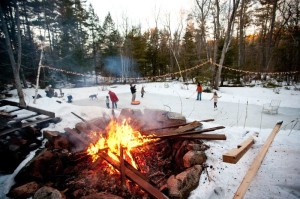
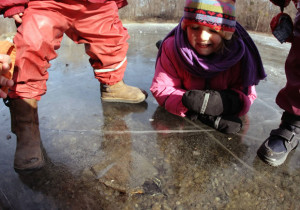
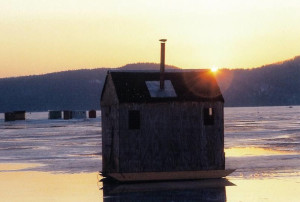
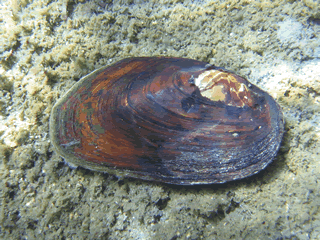
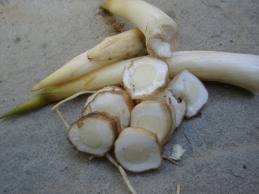
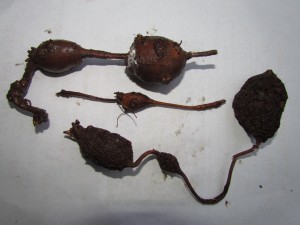
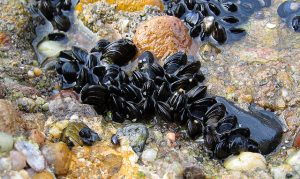
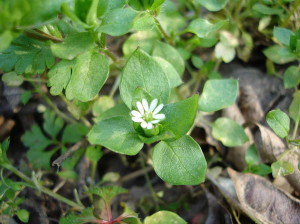
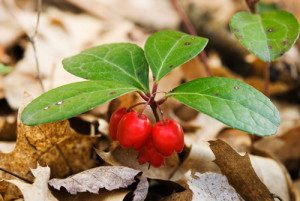
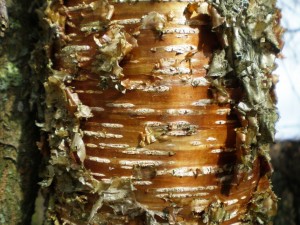
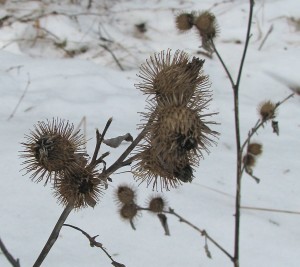

First Comment 😀
This article is rivetting Green! I love winter
one plant that I noticed that you did not include is alfilaria,or erodium cicutarium. it makes a fair leafy green in winter here in southern colorado and some western states, especially up here in high desert.
He did mention storksbill — it grows here in my urban garden in central Illinois, but I didn’t know what it was until I looked it up! I’d thought it was a wild geranium.
Valuable info to know, for those of us especially who rely on local walking trails that were once railway lines. There’s an awful lot of
forageable goodies to be found if one gets out and looks, including (for me) an exciting find of hazelnuts this fall which I’ve held onto for Christmas treats, and the usual bags of black walnuts. I always wondered why people rake piles of them into the gutters (paying for the trash pickup, too!), and then those same people go to a megamart and spend who knows how many dollars for bagged walnut pieces?!?
Jeremy, I’d be interested to know how you prepare your greens? Steamed, perhaps? And what do they taste like? (No fair saying “chicken” — that seems to be the fall-back flavor for uncommon meats around here, which has now expanded to included greens and fruits.)
Rachel,
Enjoyed your post! It IS amazing how well people have been trained, by advertising and whatever other social pressures, to totally de-value the food under their noses in favor of industrially produced food they have to buy at the supermarket.
On foraging along former railroads, do you have any concerns about toxic residues in the soils that might be taken up, or even concentrated, by certain plants? I understand that the biosphere can break down a lot of toxins, given time and the right conditions/species, but many toxins are notably persistant in the environment; others are elements (like lead, mercury, cadmium, etc) that cannot be broken down. While I am not familiar with the specific toxins of concern along railroads, I do know that they are considered to be among the most toxic places. In addition to the petrochemicals associated with running the trains (fuels, greases, etc) the ties were soaked in toxins, and the railroad beds and surrounding areas were heavily sprayed with herbicides.
All in all, the idea of foraging along former railroads does not seem appealing to me. I might be too cautious, but… (The dismantling of railroads in favor of trucking, which is much more petro-fuel intensive is another subject altogether… but still one of interest to those of us who care about the planet!)
Best!
I think railroad are poor places to forage for food. It might be a good place to find seeds for transplanting.
Brings back some fond memories, of Run Around Pond, Allen’s Pond, and the Harraseeket River in the winter, where I would frequent the ice. Then of course spring, and the obligatory native brook trout and fiddle heads.
Oh… I have not thought about Run Around Pond for decades… thanks for the memories (David and I grew up in the same area of Maine, explored the same fields and forests.)
I used to go and collect rosehips, elderberries, crabapples, hawthorns, wild riparia grapes, wild american plums, silphium seeds, boxelder seeds, and sometimes winter black walnuts. Of these the only ones that are truly available through most of the winter are the rosehips, silphium seeds, crabapples, and some nuts, and also some species of vaccinium, and sumac. It is sometimes tasty to suck the sap from the broken twigs in late winter. I’ve seen squirrels do this many times, and it is a good source of water sugar and some electrolytes.
I was wondering if your DVDs have medicinal plants in them
No per se. They are exactly the same videos that are available for free on You Tube. I mention some medicinal uses but I am not an herbalist and the videos are not about medicinal plants but rather edible ones.
Hi Green Deane, just discovered your site-love it.
I sadly live on the other side of the pond so it would be impractical for me, but, have you considered collecting seeds of these wild food plants and creating a seed swap meet, so all of us like-minded individuals can spread biodiversity and grow these plants in gardens….? I’m planning on starting up a plant/seed exchange here in UK focusing on perennial food plants (because I’m into being a lazy gardener!). I would love some seeds of edible honey suckles. I trained in horticulture years ago, and I didn’t realise that Eleagnus ssp were all edible fruited, I think wine used to be made from them in the old days?. In USA you guys have giant morels too, if anyone could collect some spores and post them to me I’d be most grateful. I just bought a book on growing shrooms by Paul Stamets, after watching on Youtube ”The Future is Fungi” I highly recommend it.
Jeremy Thorpe,
Dairybrook Farm,
Astbury,
Cheshire,
CW12 4RL.
ENGLAND,UK.
jeremyartist@yahoo.com
This was a very usefull article for me, being Canadian and always trying my best to be an all seasons outdoorsman not just a three season one. I thought I was very clever thinking to look for last years standing Jerusalem Artichoke stems, obviously I’m not the only one. I also knew mustard garlic could be found under snow although I did not realize there were other small plants under the snow I might be able to find. I do have a question about finding burdock in the winter. If I find one in the winter and its a dead second year plant does the root still hold food value? Or as I’ed guess, did the plant use all or most of the stored energy in its second season?
I still need to find a place for cattails! I want to try them so bad, but I’m worried about water quality in most of the places I find them. Do you usually go to parks or where do you forage for them?
Spring-fed bodies of water are good places as are near the headwaters of spring-fed rivers or brooks.
Thank you for this great article.
Regarding cattails and making ‘flour’, in Euell Gibbon’s book “Stalking the Wild Asparagus” he tells how he got the starch out of the cattail roots, he took them, mashed them as much as he could in some cold water in a bucket, then waited for the starch to settle. Then he tipped the water off carefully and used the flour ‘wet’ to make pancakes and whatnot.
If you read my article on cattails you will see I mention that technique.
i would love to sip a cup of green tea each morning because it contains L-theanine which calms the mind::
Thank you, I have recently been seeking for facts about this subject matter for ages and yours is the best I have found so far.